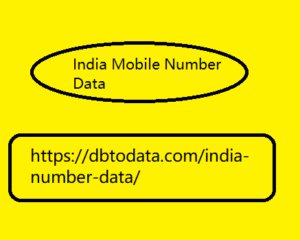Post by account_disabled on Mar 10, 2024 7:30:06 GMT
In the days of Elon Musk's takeover of Twitter and his first edicts, the interest of many was sparked around possible alternatives. The most cited was Mastodon. In reality, it is not a mere copy of Twitter, but it has some features that are worth exploring. I leave you my notes and my considerations. What is Mastodon? The most popular social networks (symmetric like Facebook and asymmetric like Twitter) have a centralized structure, that is, their operation is based on the work of servers owned by private companies. For some time, however, decentralized solutions have been studied and tested in which the ownership of the servers is not in the hands of a single entity. There can be at least two solutions: federated models and peer-to-peer models. Mastodon is an open source social networking software that works on independent and federated servers using ActivePub (the federation is called Fediverse). ActivePub is a federated protocol which, through API, defines a series of functions typical of the functioning of social networks. So every server that implements this protocol and Mastodon software can communicate with everyone else.
Anyone with the right skills can manage their own server (instance), offering India Mobile Number Data the functions of the Mastodon software to users who register on that server. Before Mastodon, born in 2016 by the German Eugen Rochko, other social networks based on ActivePub tried to reach a critical mass, including GNU social and Diaspora. No one had ever had the opportunity to take advantage of the weaknesses of a competitor like Twitter. Today, Mastodon has surpassed 7 million registered users (2.5 million active), many of which gained in recent months. How Mastodon works The interface is very reminiscent of the first Twitter (let's be honest: it's very sad), the operation is also similar, but it has some distinctive functions and some elements of difficulty for the average user: The user must know that one does not register on a predefined site, but must choose the server on which to register ( here is a list ).

For example, I chose mastodon uno , which is the instance with the most members in Italy (over 50,000). The username will look like this : https://instancename/@username . Access can be done via the web or using one of the many apps available. The messages are called toot and have a limit of 500 characters (ah... they are editable). For each toot it is possible to set a different privacy level: Public: visible to all Not listed : Visible to everyone, but the message is excluded from discovery features Followers only: Visible only to followers Mentioned people only: Sent only to mentioned users (i.e. a private message, but not encrypted) The retweet is called boost The quote function of a tweet is missing here because the creator believed it could give rise to distorting effects. To view the toot you can use three different chronological timelines: Home: shows your own toots and those of the users you follow (but also the toots that they have decided to relaunch) Local: shows the toots of the server to which you have subscribed, therefore both the messages of the accounts you follow and those of those who we do not follow but who are subscribed to that instance (except those we have blocked or silenced) Federation: shows the toots of accounts that are followed by at least one person registered on our instance or that have been relaunched from an account on our instance.
Anyone with the right skills can manage their own server (instance), offering India Mobile Number Data the functions of the Mastodon software to users who register on that server. Before Mastodon, born in 2016 by the German Eugen Rochko, other social networks based on ActivePub tried to reach a critical mass, including GNU social and Diaspora. No one had ever had the opportunity to take advantage of the weaknesses of a competitor like Twitter. Today, Mastodon has surpassed 7 million registered users (2.5 million active), many of which gained in recent months. How Mastodon works The interface is very reminiscent of the first Twitter (let's be honest: it's very sad), the operation is also similar, but it has some distinctive functions and some elements of difficulty for the average user: The user must know that one does not register on a predefined site, but must choose the server on which to register ( here is a list ).

For example, I chose mastodon uno , which is the instance with the most members in Italy (over 50,000). The username will look like this : https://instancename/@username . Access can be done via the web or using one of the many apps available. The messages are called toot and have a limit of 500 characters (ah... they are editable). For each toot it is possible to set a different privacy level: Public: visible to all Not listed : Visible to everyone, but the message is excluded from discovery features Followers only: Visible only to followers Mentioned people only: Sent only to mentioned users (i.e. a private message, but not encrypted) The retweet is called boost The quote function of a tweet is missing here because the creator believed it could give rise to distorting effects. To view the toot you can use three different chronological timelines: Home: shows your own toots and those of the users you follow (but also the toots that they have decided to relaunch) Local: shows the toots of the server to which you have subscribed, therefore both the messages of the accounts you follow and those of those who we do not follow but who are subscribed to that instance (except those we have blocked or silenced) Federation: shows the toots of accounts that are followed by at least one person registered on our instance or that have been relaunched from an account on our instance.






